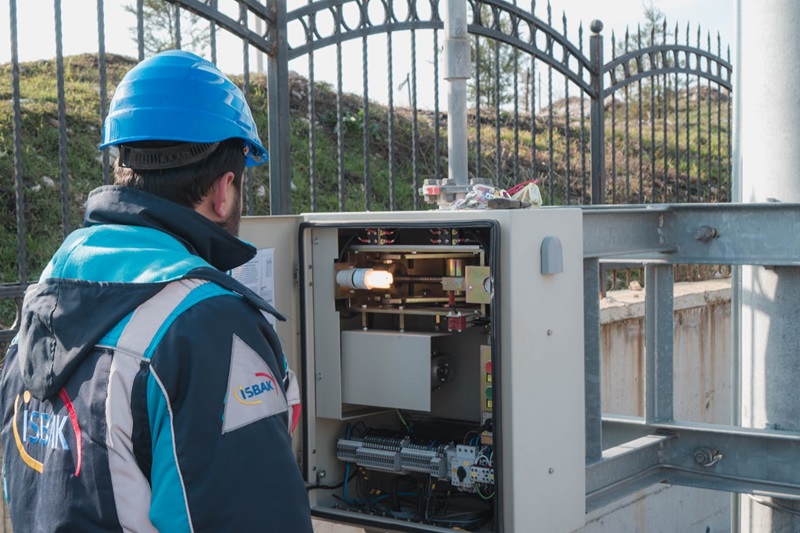Safety is an essential notion we hear from day one, isn’t it? Particularly in the field of electrical work where the margin for error is minuscule, this mantra becomes a daily reminder. However, are we genuinely sure what these essential safety measures’ entail as electricians and apprentices? That’s what we’ll unravel in today’s blog.
In this fast-paced world where doing more in less time is the new norm, shortcuts might be appealing but can lead to serious consequences. Electricians, arguably more so than other trades, must exercise maximum caution and meticulousness due to the risky nature of their work. Do you adhere religiously to safety protocols? Or do you find yourself occasionally straying from them due to pressures of time or habit?
Today, let’s delve deeper into why these safety measures are essential, what measures should be a part of your everyday work routine, and what potential outcomes can be avoided just by following these basic rules.
The Absolute Necessity of Safety Measures of Electricians
Understanding Why Safety Measures are Essential
Ensuring safety at work isn’t merely about mitigating physical injuries; the implications are much broader. It speaks to maintaining high-quality work, sustaining livelihood, and instilling peace of mind, knowing you are doing everything possible to stay safe. Making safety measures an intrinsic part of the work culture highlights an organization’s commitment to its workers – increasing productivity and enhancing the overall working atmosphere.
Exploring Common Safety Measures for Electricians
Common safety measures that electricians should follow include seal off work areas, wearing appropriate safety gear, adequate training to handle different scenarios, and timely maintenance of tools and equipment. Regular rest periods are also crucial, as fatigue can be a major factor in workplace accidents.
The Crucial Instances when Safety Measures are Absolutely Necessary
Every job an electrician undertakes requires strict adherence to safety measures – be it working on a new building, making routine repairs, or working in potentially hazardous conditions. There’s never an excuse to compromise on safety, irrespective of the size or perceived simplicity of the task at hand.
The Key Players in Ensuring Safety
Everyone involved in a project plays a critical role in ensuring safety practices are not just followed, but rigorously enforced. This involves electricians, apprentices, site supervisors, stakeholders, and even the clients themselves.
Analyzing the Pros and Cons of Adhering to Safety Measures
While it may be tempting to view certain safety protocols as time-consuming or cumbersome, the advantages far outweigh the drawbacks. Abiding by safety prevents accidents, boosts productivity, and saves lives in the long run.
Unconventional Safety Measures Every Electricians Should Consider
In addition to the standard safety protocols, there are some lesser-known but equally crucial measures electricians should consider, such as maintaining good physical health, regular exercise, proper nutrition, and staying hydrated, particularly in hot weather.
Working with electricity is inherently risky, making safety a top priority for electricians. Proper safety measures can prevent accidents, injuries, and even fatalities on the job.
Here are some essential safety guidelines that every electricians should adhere to:
1. Use Personal Protective Equipment (PPE)
Always wear appropriate PPE, including insulated gloves, safety goggles, and flame-resistant clothing. These protect against electrical shocks, arc flashes, and flying debris. Ensure that your PPE is in good condition and suitable for the job at hand.
2. Turn Off Power Sources
Before starting any electrical work, always disconnect the power at the source. Use a lockout/tagout (LOTO) procedure to ensure that the power remains off until the work is completed. This helps prevent accidental electrocution.
3. Use Insulated Tools
Always use tools that are specifically designed for electrical work, such as insulated screwdrivers and pliers. Insulated tools reduce the risk of electrical shocks and are essential for working in live environments.
4. Check for Live Wires
Even if you’ve turned off the main power, always test for live wires using a voltage tester before starting any work. This ensures that there are no residual currents or faulty circuits that could pose a danger.
5. Maintain a Safe Work Environment
Keep your workspace clean and dry. Water and electricity are a deadly combination, so avoid working in wet conditions. Also, ensure proper lighting and ventilation in the area to reduce the risk of accidents.
6. Follow Electrical Codes and Standards
Adhering to local electrical codes and standards is crucial for ensuring safety and compliance. These codes are designed to minimize the risk of electrical hazards and ensure that installations are safe and reliable.
Conclusion
While the electricians work is brimming with its complexities and challenges, calls for a special set of skills, it also demands a vigilant attention to safety measures. Negligence or ignorance is not an option when it comes to safety. Understanding why safety measures are essential, recognizing what these measures are, and consistently applying them are non-negotiable aspects of this critical profession. Barriers or constraints should never coax you into overlooking safety precautions. The pros indisputably outbalance the cons, as no quick fix or shortcut is worth risking personal safety or the safety of others. Let’s all ensure safety remains paramount in our everyday work routine, making it our most essential tool of the trade.








